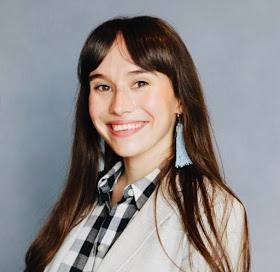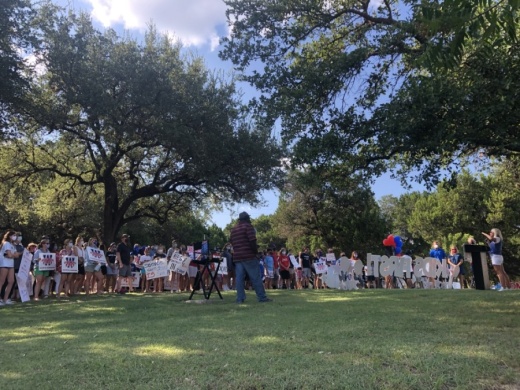Prior to the virtual Aug. 25 board meeting, several dozen community members rallied outside of the district’s administration building under the name Eanes Kids First to advocate for reopening schools.
The grassroots campaign, which has swelled to almost 1,000 Facebook supporters in a week, is led by EISD parent Jennifer Stevens. The group, in part, is pushing the district to publish a more concrete plan for resuming in-person learning as soon as possible.
“This group is about absolutely nothing but back-to-the-classroom access for our kids,” Stevens said during the Aug. 25 rally. “We’re not going to judge people that don’t want their kids to go back to the classroom; everybody is entitled to their own opinion; and so are we.”
Later that evening, trustees met virtually to discuss several changes that have occurred since the district passed a waiver Aug. 11 that allowed students to resume in-person learning through a transitional model that could span a nine-week period.
All students will receive remote instruction until at least Sept. 8 in accordance with orders issued by Travis County and the city of Austin. After Sept. 8, the district could phase in up to 25% of a campus’s population for in-person learning.
That percentage will include those who experienced the greatest challenges learning remotely: students with significant academic gaps, English language learners and those receiving special services along with others.
The model would enable the district to cap in-person learning at 25% until the week of Oct. 13 without the risk of losing funding from the Texas Education Agency. However, the model does not inhibit the district from phasing in a larger percentage of students at an earlier date.
For example, Superintendent Tom Leonard presented an updated model that would phase in an additional 25% of students per campus as early as Sept. 21. Leonard confirmed the district is working to identify that group.
However, this model could unintentionally create inequities within the district that Leonard said he is wrestling with.
“When we go from 25% [of students] to 50%, in some cases we may have a building where anybody who wants to be in-person is,” Leonard said. “Maybe we have some buildings where that wouldn’t be the case.”
At certain campuses, about 54% of families have requested in-person learning, according to an online survey.
“When you move from 25% to 50%, it feels real rough for that 4% that’s left out,” Leonard said.
Trustees did not take action during the board meeting and are scheduled to make a decision during a Sept. 8 study session.





